When people think of Africa, they often picture lions and elephants roaming freely over huge grasslands. Although the continent is indeed home to many species of exotic animals, decades of logging, sport hunting, poaching, civil wars, pollution, and other human interference have taken their toll on the wildlife. African and foreign countries looking for oil, diamonds, and other resources have destroyed both animals and their habitats.
Africa had 70,000 black rhinos in the 1970s, and ended up with about 3,000 in the 1980s. Their near extinction illustrates the danger to African fauna that exists. Many African governments have made an attempt to conserve the natural flora and fauna, or plants and animals, of their grasslands and forests. Some countries, concerned for tourism, the environment, and the extinction of animals, have set aside large pieces of land as protected wildlife parks.
0
comments
How To Cook Authentic Nigerian Red Stew
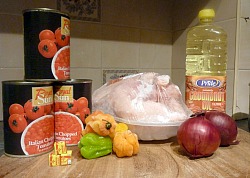 The Nigerian stew is a special type of stew prepared and eaten all over that country.It is a unique blend of tomato, onion, fresh red hot pepper, fried in vegetable oil and to which meat, or fish or a combination of both is added, with some seasonings. It is often called Nigerian tomato stew or Nigerian red stew to reflect the ingredient or the look of the stew.
The Nigerian stew is a special type of stew prepared and eaten all over that country.It is a unique blend of tomato, onion, fresh red hot pepper, fried in vegetable oil and to which meat, or fish or a combination of both is added, with some seasonings. It is often called Nigerian tomato stew or Nigerian red stew to reflect the ingredient or the look of the stew.It leaves a red, excitingly spicy stew that can be served with boiled white rice, or boiled yam or boiled plantain. It can also be served with grated fresh cooked okra and eaten with pounded yam or eba. Hm mm.
Nigerian stew comes in the following forms:
Read more »
What They Are & How To Prepare Them
Nigerian foods are diverse and exciting. They are often unrefined natural foods, rich in dietary fibers, low GI carbohydrates and a wide range of highly nutritious and vitamin rich combination.When people talk about foods eaten in Africa in general, and Nigeria in particular, they tend to forget that items highly sought after in Western countries like cassava, yams, plantain, palm oil, coconut and coconut oils, Nigerian brown beans, and rice do not grow in the West.
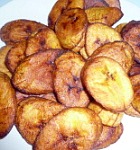 | 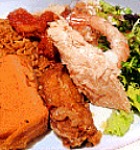 | 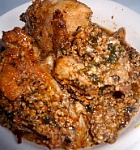 |
| This is Fried Ripe Plantain, the Nigerian way, also called dodo. It is a common accompaniment to a dish of rice. | This is a dish of jollof rice, served with mio mio and salad, as well as king prawn shrimps and fresh fish. Hmm. | A Plate of egusi soup and assorted meat and fresh fish. Another great Nigerian soup. |
Posted by
Admin ,
Labels:
African Food
1:06 am
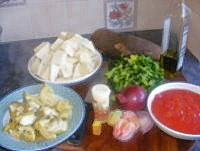
These meals are never bland as a dish. The tastes are tantalizing, the aromas exciting. Yes. Like foods from most hot climates, they are often very rich in spices, some hot, some with unique flavors difficult to describe in words, but undeniably appealing to the senses.
Ready to try out an African food recipe? Pick your choice and try any of the recipes described here.
Read more »
Posted by
Admin ,
Labels:
African Food
1:05 am
African foods are plentiful and varied. Rich in dietary fiber and often organic, they present a healthy choice when eaten in the right combination.
African food recipes are centered round a list of ingredients easily found all over the continent. These are natural unrefined food items,easily grown at subsistence farms not far away from home.
Read more »
Posted by
Admin ,
Labels:
African Food
1:03 am
Read more »
Posted by
Admin ,
Labels:
African Food
1:00 am
In Egypt, many people enjoy a popular bean dish called ful. Couscous is common in countries like Morocco and Algeria. This steamed grain is served with a stew of meat and vegetables.
Read more »
Posted by
Admin ,
Labels:
African Food
12:58 am
Africa's pure beauty and intriguing sophistication has attracted and mystified travelers, even though her violence, crime, and poverty have terrified. There isn't any easy method to explain the contrasts that are Africa. Possibly a lot more than many other individuals, Africans, as de Villiers and Hirtie have noted, really are a "job in development, in always-unfinished progression." Therefore, only times in that continuous movement to progress could be captured.
Read more »
Subscribe to:
Posts (Atom)







